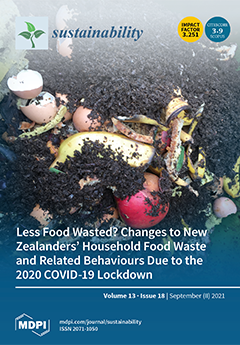Open AccessArticle
Synergetic Co-Production of Beer Colouring Agent and Solid Fuel from Brewers’ Spent Grain in the Circular Economy Perspective
by
Mateusz Jackowski, Łukasz Niedźwiecki, Krzysztof Mościcki, Amit Arora, Muhammad Azam Saeed, Krystian Krochmalny, Jakub Pawliczek, Anna Trusek, Magdalena Lech, Jan Skřínský, Jakub Čespiva, Ján Vereš, Tadeáš Ochodek and Halina Pawlak-Kruczek
Cited by 11 | Viewed by 3154
Abstract
Brewers’ Spent Grain is a by-product of the brewing process, with potential applications for energy purposes. This paper presents the results of an investigation aiming at valorization of this residue by torrefaction, making product for two purposes: a solid fuel that could be
[...] Read more.
Brewers’ Spent Grain is a by-product of the brewing process, with potential applications for energy purposes. This paper presents the results of an investigation aiming at valorization of this residue by torrefaction, making product for two purposes: a solid fuel that could be used for generation of heat for the brewery and a colouring agent that could replace colouring malt for the production of dark beers. Decreased consumption of malt for such purposes would have a positive influence on the sustainability of brewing. Torrefaction was performed at temperatures ranging between 180 °C and 300 °C, with a residence time between 20 and 60 min. For the most severe torrefaction conditions (300 °C, 60 min), the higher heating value of torrefied BSG reached 25 MJ/kg. However, the best beer colouring properties were achieved for mild torrefaction conditions, i.e., 180 °C for 60 min and 210 °C for 40 min, reaching European Brewery Convention colours of 145 and 159, respectively. From the solid fuel properties perspective, the improvements offered by torrefaction in such mild conditions were modest. Overall, the obtained results suggest some trade-off between the optimum colouring properties and optimum solid fuel properties that need to be considered when such dual-purpose torrefaction of BSG for brewery purposes is implemented.
Full article
►▼
Show Figures





